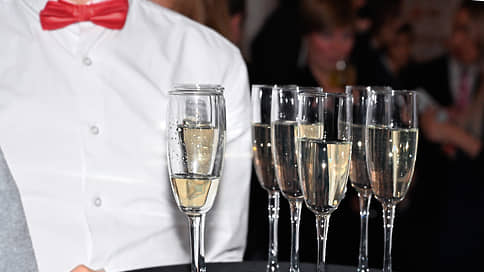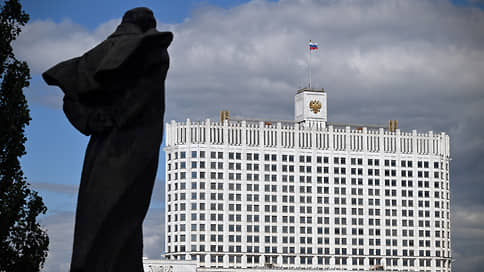Deliveries of sparkling wines from Belarus to Russia grew 21 times

In the first quarter of 2025, sales of Belarusian sparkling wine in Russia increased by more than 20 times. Such a sharp increase is associated with a low base and the fact that after the introduction of barracks duties on wine from unfriendly countries, Russian distributors began to import drinks more from Belarus. In the republic, which is now included in the top 10 countries for sales of these products in the Russian Federation, there is no sufficient raw material base, and local wines are poured from wine materials imported from third countries.
Sales in the Russian retail of sparkling wine imported from Belarus in the first quarter of 2025 increased by more than 21 times a year by the year, to 11.8 thousand decalpers (DAL), follows from the disposal of the Kommersant Alcohol company Luding Group. Belarus first entered the top 10 countries for the sale of these products in the Russian Federation. As reported earlier « Kommersant »Active supplies of wine from a neighboring state began in the summer of 2024, when the Russian alcohol distributor, “Vintrend Retail Group” received a declaration of compliance with the import of drinks of the Minsk plant of grape wines.
After Russia’s introduction of the food embargo in 2014-2016, products from Belarus often began to demonstrate an abnormal increase in supplies to Russia. According to the analytical center Milknews, from 2013 to February 2020, only in the cheese category, the neighboring republic increased the share among importers three times, from 25% to 85%. In addition, the supply of shrimp and red fish increased.
An abnormally pronounced increase in the supply of Belarusian sparkling wine is mainly associated with a low base, says Alexander Stavtsev, head of Wineretail. According to him, manufacturers import wine materials from other countries and pour. While wine materials cannot be imported into Russia, the expert said. In Ladoga (manufacturer and alcohol distributor), they agree that, most likely, this is the balcony, spilled into bottles in Belarus, and then imported in the Russian Federation. Most likely, this is an attempt by individual players to offer an inexpensive analogue of Zekekko, which has grown noticeably in the price after the introduction of new duties and excise taxes, the company notes. According to the Decree of the Government of the Russian Federation of July 29, 2024, the rate of wine import from unfriendly countries was set at 25%, but not less than $ 2 per 1 liter, against 20% of the customs value of the goods earlier.
According to Luding Group analysts, in January -March, sales of sparkling wine from Chile were also actively growing – by 158%, up to 10.4 thousand, and Armenia – by 18%, to 18.37 thousand gave. The most massive imported sparkling, on the contrary, has a decline in sales: in products from Italy – by 30%, gave up to 1.21 million, from France – by 32%, up to 159 thousand gave, Spain – by 37%, up to 101 thousand.
According to the chairman of the Presidium of the Association of Retail Companies (Acort) Stanislav Bogdanov, the massive inflow of sparkling from Belarus from Belarus has not yet noted – its share in the assortment of retailers is approximately 0.5%, the share of Chilean playwright is about 1%. Nevertheless, he notes that for retail chains this direction of supply is new and now it is actively developing.
Among the imported products, the redistribution of volumes in the category of wines of low and medium price segments continues, explains Vladimir Kosenko, the head of the development of the premium wine broup’s premium wine portfolio.
Realized volumes come from countries that can offer a comfortable price to consumers is added by an expert.
A decrease in sales of sparkling wine in the Russian Federation at the beginning of 2025 is primarily due to the excess of demand over the supply and partial transition from a cheap sparkling segment to sidras and beer drinks that simulate sparkling wines, Alexander Stavtsev points out. According to the Rosalkoltabakcontrol, in January -April of 2025, the sales of sparkling wine in Russia decreased by 5.2%, to 6.4 million gave. At the same time, in the first quarter of the sales of cider, Poire and meads increased by 13.6%, and gave to 2.639 million.
According to Kommersant, the alcohol market participants at the disposal, in the first four months of the year, 4.8 million gave a sparkling wine, which is 7% more than a year by the year. The production of sparkling wine depends on the characteristics of the raw materials. In 2024, white grape varieties ripe before the usual, which is why a noticeable part of the harvest is more suitable for quiet white, not sparkling wines, explains Alexander Stavtsev. Particularly lacking products in a low price segment, so now the distributors are trying to carry it from where it turns out and where the duties rate are lower, the expert adds. Earlier, importers also began to test the supply of sparkling « Salton Zakokko Rose » and « Salton Zekokko » from Brazil (See “Kommersant” of July 24, 2024).








